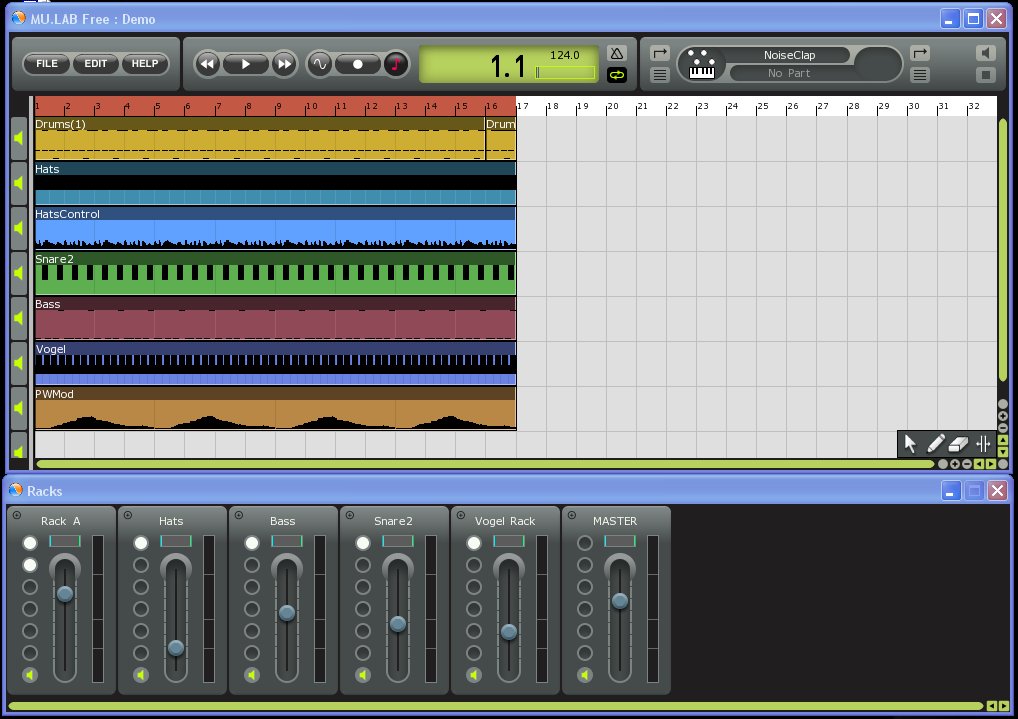

Each bank can have one of four different outputs. You can load four effects into each of the four included banks (banks are like busses), and route whichever pad to any of the four banks. It has twelve drum pads available, and each one can trigger a different sound. Of those seven devices, the one I will mention more about is the MuDrum. Just starting out with these instruments as building blocks you can make a wealth of presets. They are set in stone, but they will let you throw together a preset quickly. These can’t be edited in the Deep Editor. I do have to mention the included MuVerb, MuEcho, MuDrum, MuSynth, MuSampla, MuPad, and MultiSampla instruments. It is a long list, way too many to mention here. ADSR and multipoint envelopes are included, a ring modulator, a bit reducer, and a sample player. These include audio generators, such as oscillators, noise generators, and a Poly Synth. There are many modules included with MUX. Besides the obvious modular synthesis usage, another way to use it is to set up a modular effect. You can use the various modules in different combinations, creating nearly an unlimited number of sounds. The Deep Editor is where the modular configurations are actually set up. This is where you can get at the controls that have been setup for that particular preset. When you look at one of the MUX presets, you’re looking at the Front Panel. You can choose an External Audio Editor, edit Preferences, access the Clipboard, and much more. That last icon is used for many other settings, and you can configure just about anything you’d like. There is a third way to get there as well: right click on the background of MUX (between the control sections), and then click Editor/Show Deep Editor. You can also get there by clicking the last icon, and then in the Editor section, select “Show Deep Editor”. This is where you can set up the modular configuration to your liking. This will bring you to the “Deep Editor”. To get to the modular section, click the second-to-last icon at the top. What you first see is the Front panel, and the basic controls for that particular preset. When you first load MUX, the default preset is called “Basic Synth”. This means you could have it loaded on something like a CD/DVD or USB jump drive.
#Mutools mulab demo install
One great feature is that MUX doesn’t install anything to the PC outside of its own folder. Installation was very easy, and uses a key protection scheme. For my review, I tested the VST plugin on my PC. MUX is included as part of MuLab for PCs and Macs, and is also available separately as a PC-only VST plugin. It is a VST host, modular synth, and effect plugin all rolled into one. It is actually much more than a standard modular synthesizer. MUX is their versatile modular synthesizer plugin.
#Mutools mulab demo software
MuTools is the software company behind MuLab and MuVerb. It is actually much more: a VST host, modular synth, and effect plugin all rolled into one. MUX is MuTools’ versatile modular synthesizer plugin.


 0 kommentar(er)
0 kommentar(er)
